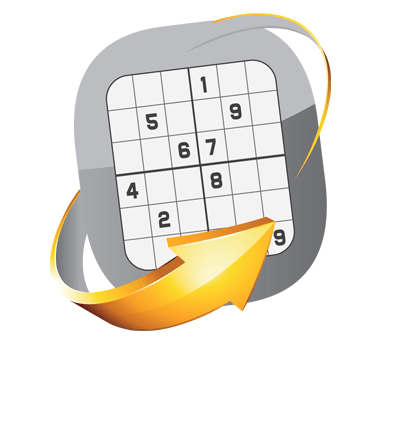

It is a straightforward technique that focuses on one single digit, and its goal is to restrict the number of cells that can have that number as a possible candidate. X-Wing sudoku trick is for medium to hard difficulty level puzzles. Because of that, you can dismiss all other candidates marked in green cells so that only the 4s and 6s are left.

Thus you can understand that these two candidates have to be in those two-column boxes. However, candidate 4 and 6 is not there in the rest of the 3×3 space. They are both in the same column and have numbers 4 and 6 as potential candidates. Let’s have a look at the two cells that contain green-marked candidates. Still, it affects the cells containing the candidates, i.e., instead of dismissing numbers from other cells, this technique dismisses other numbers from the paired cells themselves. The Hidden pair Sudoku trick is very similar to the Naked pair. This technique can also be used for three (Triplet) or four (Quad) candidate numbers. Now, because in one of the two boxes (number marked in green), you must have a 2, and in the other a 3 (or vice-versa), you can conclude that there cannot be any 2s or 3s in the same column, row, or square, and thus you can dismiss them. Look at the 3×3 square at the bottom right corner, marked by possible candidates. Let’s look at the Sudoku puzzle in the example given below: If two cells in the same block, row, or column can have only the same pair of candidates, then we can dismiss them from all the other cells in the same block, row, or column. Most of the techniques used to solve Sudoku puzzles work by eliminating candidates. So, you have to apply several Sudoku tricks & techniques to tackle these challenges and solve the puzzle.īefore we move on to the sudoku techniques, you must know what a Candidate is in Sudoku? A candidate is a value or a number that is the possible solution for a cell in a Sudoku Puzzle. The Sudoku game offers engaging challenges to all levels of players, be it novice or seasoned puzzle players. Logical thinking & good organizational skills.Quickly learning & recognizing patterns.Sudoku Tricks – 10 ways to solve Sudoku.These locked pairs are not valuable for the Swordfish strategy, but (in my opinion) these locked pairs represent the Swordfish pattern and gave name to this strategy. Next to pairs CE, AF and BD, the following pairs are also locked pairs: AC, BE, DF. Number 5 can thus be removed from all other cells at these columns. In column 5 cell A or F must contain number 5, and at column 9 cell B or D must contain number 5. Since number 5 must be in cell C or E on column 2, cell X cannot contain number 5. At row A, number 5 can only be filled in at cell A or B, and therefore, number 5 must be present in cells B+C+F or in cells A+D+E.īased on this statement, the pairs CE, AF and BD are locked pairs as well. If cell A would contain number 5 than cell D+E must contain a 5 for same reason. Therefore, on row F, cell C must contain a 5 (single candidate), and at row J, cell F must contain a 5 (again: single candidate). If cell B would contain numer 5, then cells B and D cannot contain 5. Number 5 is either in the cells B+C+F or in cells A+D+E.

The Swordfish method can be explained as follows: This shows 3 parallel lines that show some similarity with a Swordfish. I think the Swordfish pattern becomes visible by connecting cells A-C, B-E and D-F.

I don't recall you saying anything similar anywhere else and it would, I think, be clearer just to say, as you normally do and as you do in the example that follows, that the swordfish is in the columns and the eliminations take place in the rows. Beyond that, I cannot see what is gained by the comment that it "reduces to three pairs", when other 2-2-2 examples could "reduce" to various combinations of 3-2-1. I have to wonder whether the example has been reoriented at some stage during development.Īn initial fix would be to change "rows" to "columns" in the quoted sentence. Even though the colours in the diagram show that the swordfish is in the columns, it is still initially confusing - the more so because it would be a 2-2-2 in either orientation. I'd like to reiterate Pieter's point about the potential for confusion in the write-up of the 2-2-2 example.The sentence "The next example has 9 twice in each row and is called a 2-2-2 Swordfish" strongly suggests, twice, that the swordfish is in the rows, and the reference in the following paragraph to the pairs (visibly in the rows) that are "staggered so that they still cover three columns" reinforces this. I'm definitely learning from it - I just used my first swordfish (3-3-2) to solve a newspaper puzzle.


 0 kommentar(er)
0 kommentar(er)
